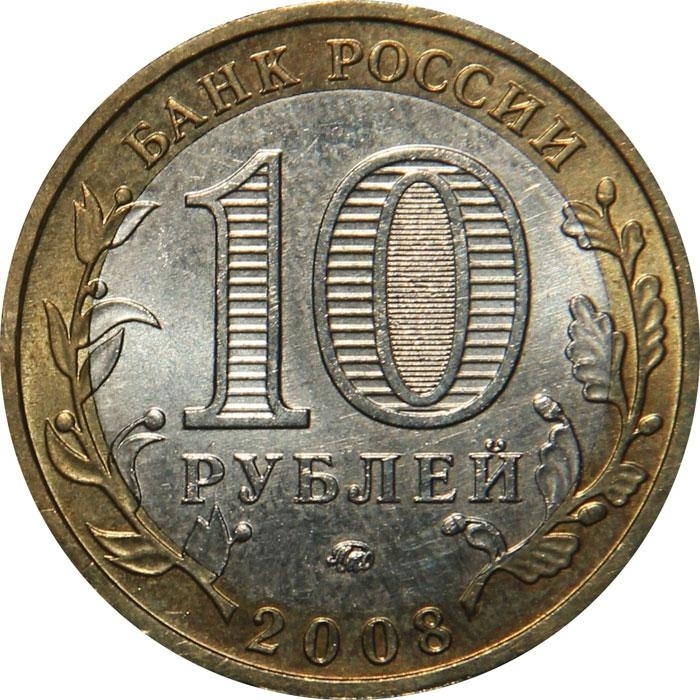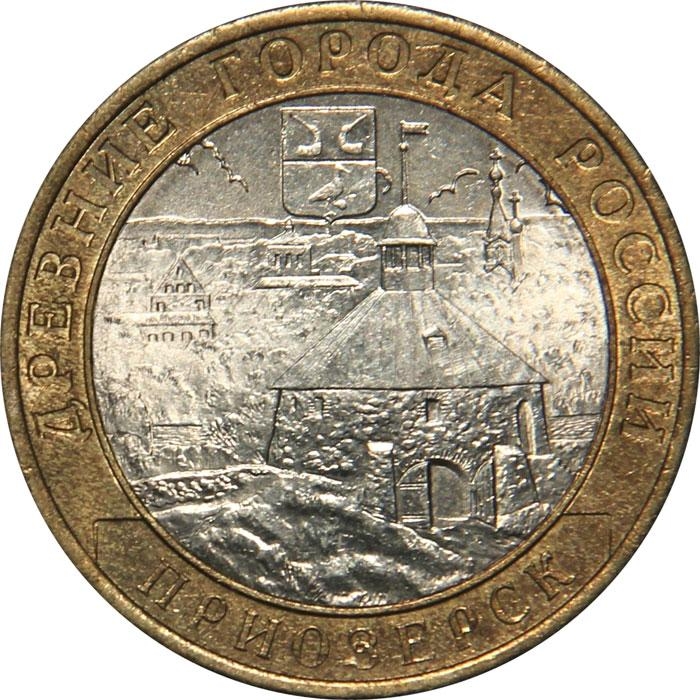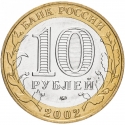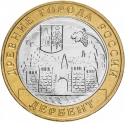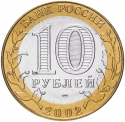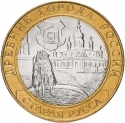You are about to finish your registration. Please check your mailbox (including spam folder). There should be a letter with a confirmation link. Check setting to make sure that your e-mail address is correct.
Send letter againDescription
In 2002 the Central Bank of the Russian Federation began an annual program that each year commemorates some of their historical towns on bi-metallic 10 Ruble coins. The coins picture the city and its arms on one side and has the standard Russian 10 Ruble obverse on the other. Unlike a lot of coin programs throughout the world there is no set regularity to the number of coins released each year in this series, with some years seeing 4 coins issued and other years only 3.
Priozersk known before 1948 in Finnish as Käkisalmi (Swedish: Kexholm) is a town and the administrative center of Priozersky District in Leningrad Oblast, Russia, located at the northwestern shore of Lake Ladoga, at the estuary of the northern armlet of the Vuoksi River on the Karelian Isthmus.
From the Middle Ages, Priozersk was known as Korela to Russians and Käkisalmi to Karelians and Finns. The town was a part of Vodskaya pyatina of the Novgorod Republic. The Swedes captured Korela twice: in 1578 for seventeen years and in 1611 for a hundred years. In the Swedish Empire, the fortress was called Kexholm and the whole region became known as the County of Kexholm. Russia definitively secured the area during the Great Northern War; the town's Swedish name was retained, however, as Keksgolm.
In 1812, as the Grand Duchy of Finland three years earlier had been formed within the Russian Empire, Tsar Alexander I incorporated Keksgolm with the rest of Old Finland (Vyborg Governorate) into an autonomous region.
The Winter War on November 30, 1939 began with the Soviet attack. Eventually, after hard fighting, Finland was forced to cede Käkisalmi and the whole of Finnish Karelia to the Soviet Union by the terms of the 1940 Moscow Peace Treaty. During the Continuation War in 1941–1944, Finland gained back Keksgolm and other territories ceded to the Soviets in 1940. The population returned to rebuild the town, but were again evacuated at the close of World War II.
On October 1, 1948, Keksgolm was renamed Priozersk as a part of the campaign to rename localities in the areas annexed from Finland. Priozersk was settled with mainly Russians, Belorussian, and Ukrainian migrants, who have since comprised the majority of the local population.
Obverse

|
In the center of the disc indication of the denomination of the coin: 10 RUBLES, inside of the figure 0 hidden pictures of the number 10 and of the inscription RUB visible by turns on changing angle of vision, in the lower part of the disc the mint trade mark MMD, on the ring along the rim above the inscription: BANK OF RUSSIA, below the year of issue 2008, to the left and to the right stylized twigs of plants going over to the disc. БАНК РОССИИ |
|---|---|
Reverse

|
Architectural panorama of the town with the image of the round Gate Tower of the old fortress, above the coat of arms of Priozersk to the right - the Assumption Cathedral with the Bell Tower, over it on a ribbon the semicircular inscription: ANCIENT TOWNS OF RUSSIA, below the inscription along the rim PRIOZERSK. ДРЕВНИЕ ГОРОДА РОССИИ |
| Edge |
300 corrugations and the inscription ДЕСЯТЬ РУБЛЕЙ (TEN RUBLES) recurring twice and divided by asterisks. ДЕСЯТЬ РУБЛЕЙ ⋆ ДЕСЯТЬ РУБЛЕЙ ⋆ |
10 Rubles
Ancient Towns of Russia
Priozersk
Subscribe series
Y# 994
Ancient Towns of Russia
Priozersk
Characteristics
| Type | Commemorative Issue (Circulating) |
| Material | Bi-Metallic |
| Ring | Brass |
| Center | Cupronickel |
| Weight | 8.4 g |
| Diameter | 27 mm |
| Thickness | 2.1 mm |
| Shape |
|
| Alignment | Medal |
| Mints |
Moscow Mint (MMD) Saint Petersburg Mint (SPMD)
|
